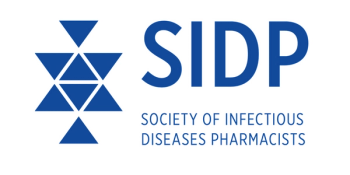
Top Infectious Disease News of the Week—July 29, 2018
Stay up-to-date on the latest infectious disease news by checking out our top 5 articles of the week.
#5: UK Health Officials Aim to Stop The Emerging Superbug Mycoplasma Genitalium
Mycoplasma genitalium (MG) is an emerging sexually-transmitted superbug and in an effort to stem the problem, health officials in the United Kingdom have recently passed new guidelines.
First identified in the early 1980s, M. genitalium is a bacterial pathogen which causes urethritis in males. According to the Centers for Disease Control and Prevention, it causes an estimated 15% to 20% of nongonococcal urethritis (NGU) cases, 20% to 25% of nonchlamydial NGU, and about 30% of persistent or recurrent urethritis. While MG can be asymptomatic, symptoms in men may include watery discharge from the penis and a burning sensation when urinating. In women, it can also cause discharge and urination discomfort, along with bleeding between periods, often after sexual intercourse. Cases left untreated in women can lead to pelvic inflammatory disease and fallopian tube scarring, potentially resulting in infertility. Over time, it can also cause inflammation leading to higher susceptibility to other sexually transmitted infections. These infections affect an estimated 1% to 3% of men and women in the United Kingdom, the United States, and Australia.
Read more about
#4: Consensus Statement Seeks to Halt Criminalization of HIV—Public Health Watch
In 2015, the case of Michael Johnson made national headlines.
At the time, Mr. Johnson, a student at Lindenwood University in St. Charles, Missouri and a member of the school’s wrestling team, was arrested and charged with “recklessly infecting [with] and recklessly exposing” multiple sexual partners to HIV. Initially, he was convicted and sentenced to 30 years in prison; however, last fall, that verdict was overturned, and Mr. Johnson (known by the nickname “Tiger Mandingo”) agreed to plead guilty in exchange for a reduced sentence of 10 years.
Some HIV experts are saying that is still too harsh a punishment. In a consensus statement published in the July 25 issue of the Journal of the International AIDS Society, 20 HIV/AIDS researchers and clinicians from 16 countries have made a formal argument against laws in some countries that effectively criminalize the disease, prosecuting people who are HIV-positive for not disclosing their disease status, exposing sexual partners to the virus, and/or transmitting the virus to unwitting partners. Their position is rooted in science: Several studies released within the past decade, including most notably “PARTNER” and “Opposites Attract,” have not identified any cases of sexual transmission from a person with an undetectable viral load in either heterosexual and male couples of different HIV status.
Read the rest of the
#3: Legionella Bacteria Detected in Two New York City Boroughs
Health officials in New York City are working to minimize the threat of Legionella bacteria across the city as a cluster of Legionnaires’ disease cases has been identified Lower Washington Heights. Legionella bacteria were also detected in the water supply of a hospital in the Bronx.
Legionnaires’ disease is not unfamiliar to the city of New York. Outbreaks have been reported there since 1985; the last major outbreak, which included 138 cases and 15 deaths, occurred in the South Bronx in the summer of 2015. That outbreak was regarded as one of the largest and deadliest outbreaks of Legionnaires’ disease in US history. All the cases were linked to a cooling tower in the South Bronx.
As part of the investigation into the current outbreak, New York City Department of Health officials are sampling and testing water from the cooling tower systems in the Lower Washington Heights in the borough of Manhattan, to determine if they are the source of the Legionella contaminated water causing the current cluster of cases.
Read more about
#2: Changes to CMS IPPS: What Does It Mean for Infection Prevention Programs?
Reimbursement from the US Centers for Medicaid and Medicare (CMS) is a critical component of a hospital’s stability and a large portion of the reimbursement is linked with hospital-acquired conditions (HACs). These HACs include hospital-associated infections (HAIs) like catheter-associated urinary tract infections, surgical site infections for certain surgeries, and central line-associated bloodstream infections. The 2008 Inpatient Prospective Payment System (IPPS) Final Rule included 10 categories of HACs that were tied to CMS payment, meaning that reimbursement was linked with quality of care. Simply put, this was a way for CMS to force hospitals to cut down on HACs and improve quality of care and patient safety.
Despite data from the US Centers for Disease Control and Prevention (CDC) indicating that rates of HAIs in the United States have been on the decline, with a 50% decrease in central-line associated bloodstream infections, and a 17% reduction in surgical site infections between 2008 and 2014, the fact of the matter is that the United States has an HAI problem.
Read more about the
#1: Clade X Simulation Reveals United States Is Not Prepared for Severe Pandemics
A simulation designed to pinpoint the challenges in preparedness and current policies that need to be addressed in order to prevent a severe pandemic indicates that the United States is far from ready for a widespread pandemic with a novel pathogen
The Clade X simulation was conducted by the Johns Hopkins Center for Health Security in May 2018 as an exercise focused on high-level strategies, decisions, and policies that are needed to prevent a pandemic from spiraling out of control. Previous simulation exercises from the center include the “Dark Winter” simulation in 2001, which portrayed a fictional scenario of a smallpox attack on US citizens, and the “Atlantic Storm” simulation in which smallpox was used as a bioterror weapon.
The 2018 fictional scenario is based upon “Clade X,” a novel virus with genetic elements of the Nipah virus that was genetically engineered as a weapon to diminish the population of the world.
The simulation tasked a group of individuals­­­—the Executive Committee (EXCOMM), which represented members of the President’s National Security Council as well as members with expertise in pandemics—with making decisions on how to handle the outbreak of Clade X, which claims the lives of 20% of individuals it infects. As the virus traveled quickly from person-to-person first in Frankfurt, Germany, and Caracas, Venezuela, before making its way to the United States (see Clade X Timeline), the leaders on the security council had to shift from making decisions concerning foreign diplomacy such as travel, monitoring and quarantining of those exposed, to domestic policies as they attempt to determine how to contain the virus and how to navigate the complex public health relationship between the government and private hospitals.
At the conclusion of the scenario, which was set at 20 weeks since the beginning of the first outbreaks, there was no virus; however, 150 million people were dead across the world, including 15 million US citizens.
Read more about the
Newsletter
Stay ahead of emerging infectious disease threats with expert insights and breaking research. Subscribe now to get updates delivered straight to your inbox.






























































































































































































































































































